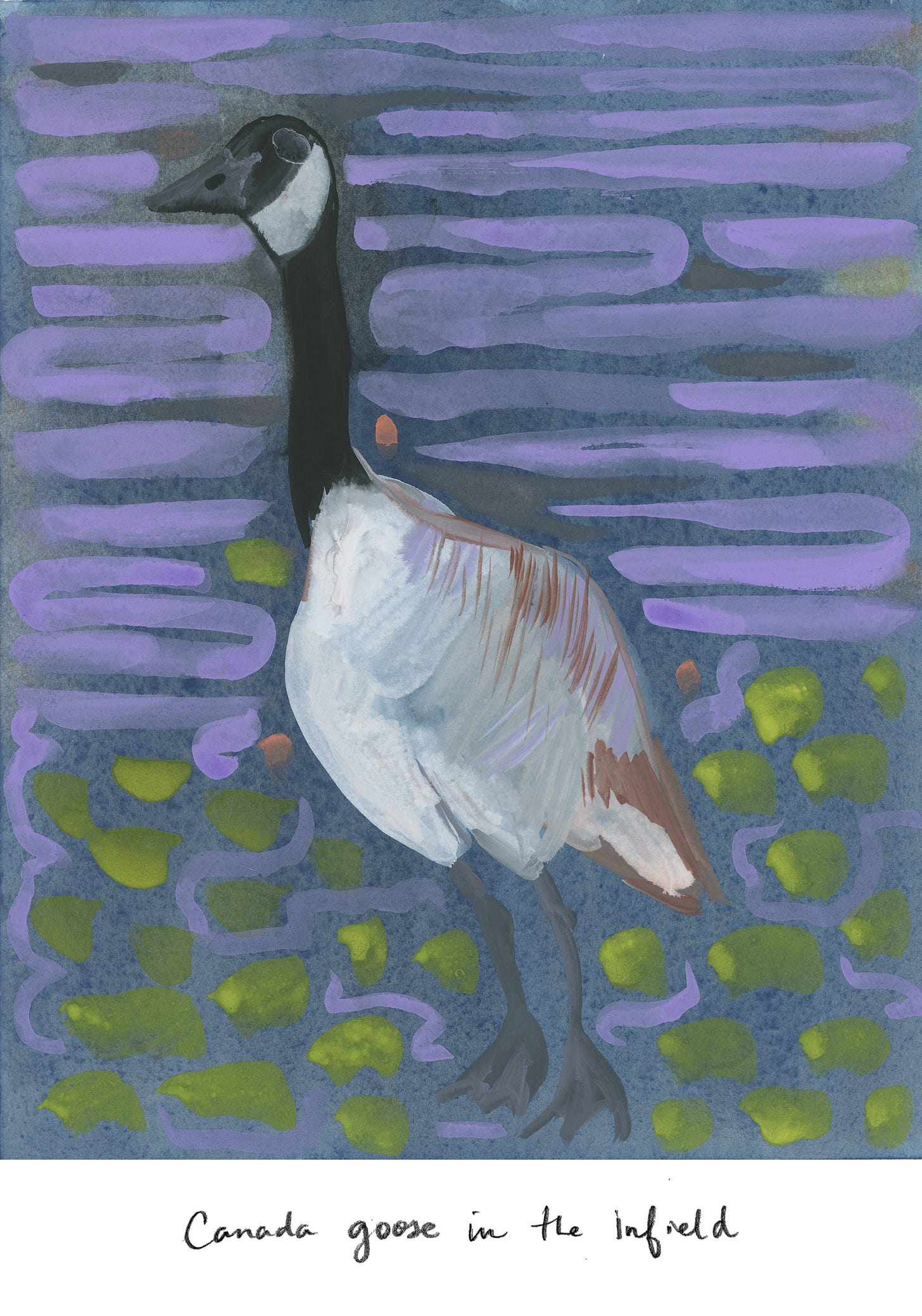Hi, friends — we’re closing in on a year of this newsletter, and the next will be the true mid-November anniversary. To celebrate small victories, I’m going to introduce a paid/gift subscription with a new feature “Rabbit, Rabbit” sent on the first of every month, exclusively about rabbits (for good luck! and also as a deep dive into what it means to be wild/not-wild in the world). You can subscribe now, or wait until the full reveal.
I started this newsletter as an escape hatch and way to learn about the life around us, focusing on the creatures in our backyards and daily lives. Climate change and technology are shifting our relationships with the natural world, and many of us know little about even the most common creatures. So, this is a roll-up-your-sleeves, what-do-these-creatures-mean-to-us, moment. How do they shape our lives? Why do we love and sometimes hate them? What can we do to help?
I’d like to keep going and expand in a steady, sustainable way (for a person with a full-time job, kids, and a small studio). Every message from you is a huge boost and delight and keeps me going. So, let’s celebrate this rocky, strange, difficult year together. My goodness, we’re still here, spinning through the galaxy, and you know what, so are the Canada geese (Branta canadensis).
More soon next time! Thanks for reading. —Amy Jean
The other morning, dark and early, I went for a run with my husband on a narrow, paved path around two baseball fields. It was the half hour before dawn, when the stars had retreated and the sky was fading from black to blue, a touch of pink on the horizon. A nearby restaurant was beginning to smell like bacon. In any event, we went for a run.
Rounding the third turn, we noticed a solitary, smallish Canada goose on the pitcher’s mound. Normally, in the past, we had seen small flocks in the outfield, sifting through the grass, grazing like horses. This one looked lonely and forlorn. A pitcher without a team.
We continued running around the fields, the sky brightening at each lap. We checked in on the little goose with every third turn, watching him wander around the infield for a good twenty minutes. Why was he there alone? Where were the other birds? With every lap, the tension built—why was he there alone? Where were the other birds?
And then, suddenly: the bird looked up and squawked. And then! We heard other squawks in the sky beyond the trees. And then! We saw two big birds flying in fast, squawking loudly. The bird on the pitcher’s mound ran, squawking, its flappy little feet going as quickly as possible, to greet them. What a reunion! Like a toddler running to his parents after a long day; like sisters seeing each other at the airport; like old, impossible friends after years apart.
The three birds settled in comfortably. A little family group? They began sifting through the outfield for their breakfast. We drank some water and watched, happy for this unexpected moment of warmth before the sun rose.
Canada goose links—
Though they seem robust and ubiquitous now, the Canada goose was largely extirpated (made locally extinct in some ranges) through over-hunting in the 19th century. The giant Canada goose, a particularly large subspecies, was thought to be extinct for 30 years [.pdf of 1963 press release from the US Department of the Interior, via US Fish & Wildlife Services]
Canada geese form tight bonds and generally mate for life, with both parents caring for their young. Sometimes, though, they divorce [Nature via PBS]
Always a good tidbit on the Cornell Lab of Ornithology—apparently Canada geese are “especially fond of blueberries.” Plus I like this video of two geese squawking with each other (probably upset about the person following them with a camera) [All About Birds]
Also—
My Canada goose drawing is for sale; please let me know if you’re interested. I will send some of the proceeds to the Cornell Lab of Ornithology again because they’re wonderful.
Wild Life #34 / this newsletter is a place to learn about the life around us, one lonely goose at a time. I do this because I’m not sure what to do about the millions of species in danger of extinction. It means something to see and enjoy the life around us. Thanks for reading and have a great weekend.





This is awesome Amy Jean! I've been contemplating myself how to - as you say - expand in a sustainable way when one has a full time job. Can't wait to see how it unfolds for you!
Thanks, Amy Jean. I loved reading this today. We have hundreds of Canada geese landing in the creek behind our house these days, usually at happy hour. 'Tis the season!
I'm also very impressed that you run 👀, and run with your husband 🤣
Keep up the good work! I appreciate you❤️